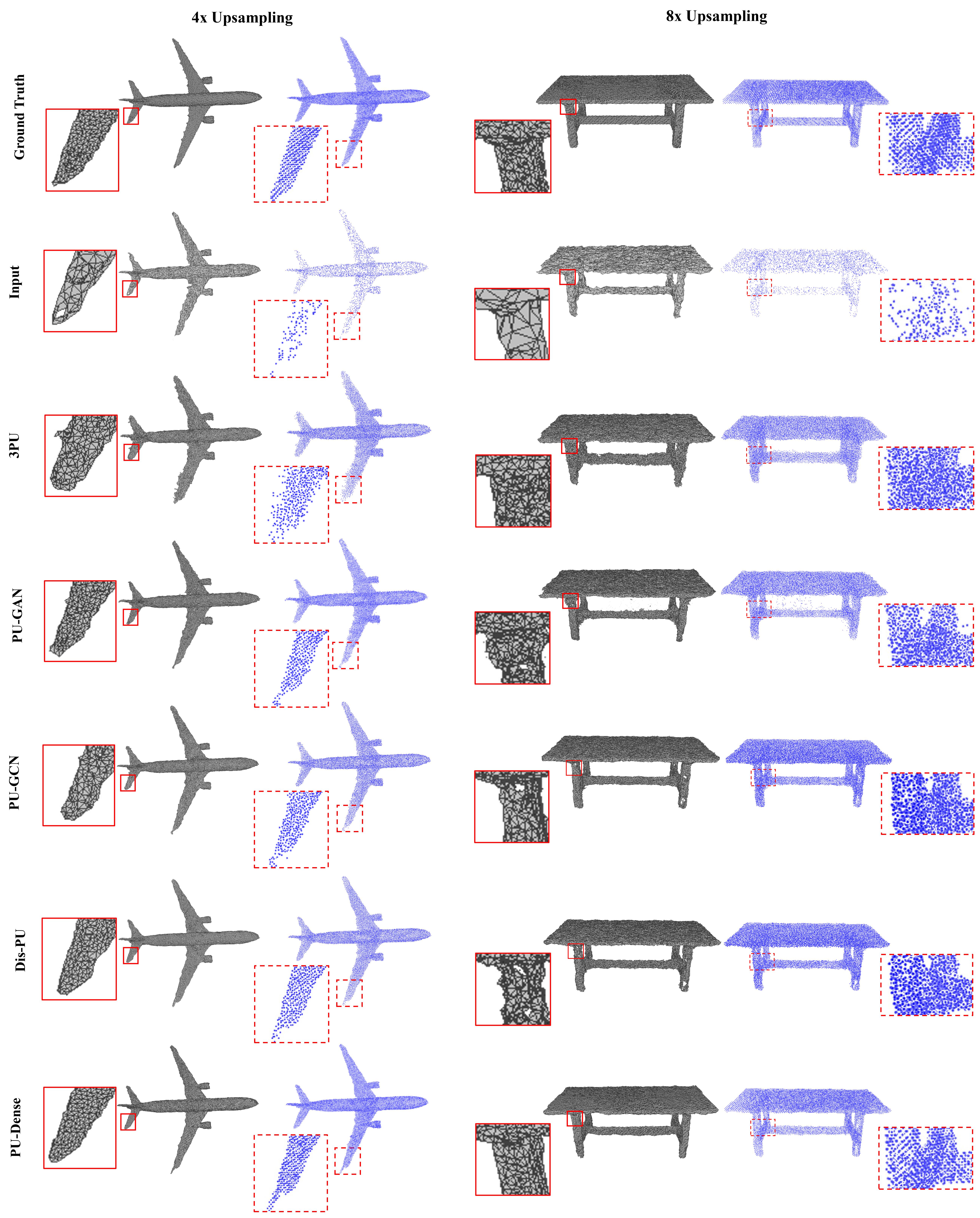by Anique Akhtar, Zhu Li, Geert Van der Auwera, Li Li, Jianle Chen.
This repository is for our paper 'PU-Dense: Sparse Tensor-based Point Cloud Geometry Upsampling'. The code is modified from PCGCv2 and MinkowskiEngine.
Project website with details about the work and the visual results
In this work, we present a novel geometry upsampling technique, PU-Dense, which can process a diverse set of point clouds including synthetic mesh-based point clouds, real-world high-resolution point clouds, real-world indoor LiDAR scanned objects, as well as outdoor dynamically acquired LiDAR-based point clouds. PU-Dense employs a 3D multiscale architecture using sparse convolutional networks that hierarchically reconstruct an upsampled point cloud geometry via progressive rescaling and multiscale feature extraction. The framework employs a UNet type architecture that downscales the point cloud to a bottleneck and then upscales it to a higher level-of-detail (LoD) point cloud. PU-Dense introduces a novel Feature Extraction Unit that incorporates multiscale spatial learning by employing filters at multiple sampling rates and field of view.
- python3.7 or 3.8
- cuda10.2 or 11.0
- pytorch1.6 or 1.7
- MinkowskiEngine 0.4 (Can use MinkowskiEngine 0.5 or higher with a small tweak in the network)
We provide the Conda environment we used in the ./Installation_files. We have provided both the environment.yml file as well as spec_file.txt file for easy reproduction of conda environment.
We recommend you follow https://github.com/NVIDIA/MinkowskiEngine to setup the environment for sparse convolution. In our released code, we are employing MinkowskiEngine 0.4.
However, it can easily be updated to Minkowski Engine 0.5 or higher. There is minimal syntax changes in the newer version that can be updated in the Network Model.
- Pretrained Models
- Training dataset: ShapeNet Dataset
- 8iVFB Dataset
- 8iVSLF Dataset
- ScanObjectNN Dataset
- Kitti Dataset
python train.py
Please edit the araguments inside the train.py file to get the best results.
python eval_8i.py
We provide multiple demo evaluation files for each dataset. Some of them employs KD-tree partitions to not run into GPU memory issues.
tensorboard --bind_all --logdir ./Upsampling/logs/4x_0x_ks5/ --port 5001
- We provide MPEG's
./utils/pc_error_dfile to be able to calculate the PSNR for the point clouds. ./pre_post_processing/Add_Gaussian_Noise.pyfile shows how to add Gaussian Noise to the point cloud../pre_post_processing/Convert_Kitti.pyfile converts the raw KITTI point cloud to be converted into a.plyfile so it can be processed by our network../pre_post_processing/test_results_GPU.pyfile tests the quality of the regenrated point cloud. However, it does require installation ofpytorch3dto be able to use this file.
Accepted at IEEE Transactions on Image Processing (TIP). 2022. Citation would be available soon.
Please feel free to contact us with any questions. Feel free to open a new issue in this repository for a quick discussion.
A. Akhtar, and Z. Li are with the Department of Computer Science and Electrical Engineering, University of Missouri-Kansas City (e-mail: aniqueakhtar@mail.umkc.edu, zhu.li@ieee.org).
L. Li is with the Department of Computer Science and Electrical Engineering, University of Missouri-Kansas City and also with the CAS Key Laboratory of Technology in Geo-Spatial Information Processing and Application System, University of Science and Technology of China (e-mail: lil1@ustc.edu.cn)
G. Van der Auwera and J. Chen are with Qualcomm Technologies Inc., San Diego, CA, USA (e-mail: geertv@qti.qualcomm.com, cjianle@qti.qualcomm.com)
